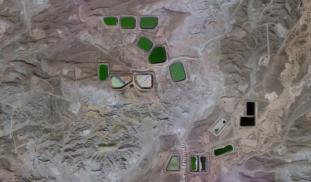Please wait...
About This Project
Regions of natural gas fracking in Utah, Wyoming and Colorado often experience high concentrations of ground-level ozone, which has severe impacts on respiratory health. But where does this ozone come from? Our project will try to answer this question in Utah's Uintah Basin. Understanding the causes of high ozone levels is essential for regulators to design effective strategies to improve local air quality.
More Lab Notes From This Project

Browse Other Projects on Experiment
Related Projects
Biomapping of Tree-based Atmospheric Methane Removal (TAMR) for Technological Development
Tree surfaces can be an effective approach for AMR, although foundational information is lacking. Here...
Mercury is in our fog, so what about our food?
Near-toxic levels of mercury were recently discovered in the fur of mountain lions in the mountains of coastal...
Can brown rot and white rot fungi work together to clean up spilled diesel?
Mycoremediation is a form of bioremediation that uses fungi to clean up contaminated sites. Brown rot and...





